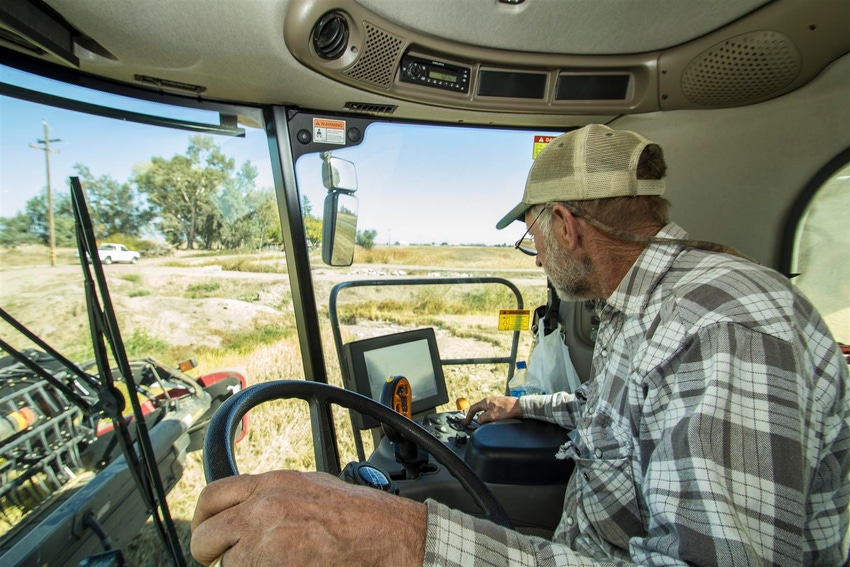October 9, 2014

Laser leveling, automated farm machinery, computerized harvesting equipment – you ain’t seen nuthin’ yet. Computer geeks and electronic wizards are not only predicting a new world of electronic wonderment in agriculture.
They’re developing it, operating it, and expanding it now.
One reason for the expansive development of new information sources and channels of communication is public demand. Consumers want to know more than their parents or grandparents ever knew about the way their food products are grown, fertilized, harvested, handled, packaged, shipped, displayed, and priced.
This might be because their parents and certainly their grandparents lived closer to the soil. They brushed shoulders with their farmer neighbors. They seemed to sense when crops around them were ready for harvest, whether they needed rain, or if recent weather extremes caused any damage.
Most of today’s consumers are far removed from production areas. They insist that information about their food be compiled, packaged, and presented to them. They want their questions answered.
Food processors, distributors, suppliers, and salespersons are channels for supplying this information, whether they want to be or not. In some cases they sought the role, in others they are swept up in the process.
Either way, they need to use sophisticated communication channels, and they have projected that need onto farmers and food suppliers.
“Tell us more,” consumers seem to keep repeating.
Traditionally, farmers and food suppliers have been delighted to tell consumers what they do to prepare food for them. Sure, an occasional slaughterhouse or sausage maker may be reluctant to share the bloody or unseemly details of his process, but that’s usually out of respect for the consumer’s sensitivities; not necessarily to hide anything.
Farmers now are beginning to use the sophisticated communication tools, many of them electronic and high tech, to their own advantage too. They can now turn to their harvesting equipment for detailed information about the fluctuation of yields in different parts of a field.
Plugging that information into other data sources tells them fertilizer applications need to be adjusted to create consistent yields across the spectrum.
Whole food chain benefits
Processors including canners, freezers, dehydrators, or combiners of raw agricultural products are in the direct communication line as well. They require endless amounts of information from growers.
They want to know when a crop was planted, when and with what it was fertilized, the pesticides applied, irrigation details, harvesting dates, and more.
Fertilizer salesmen, agricultural chemical suppliers, crop advisors, local regulators, health inspectors, and even transportation and shipping personnel require some or all of the information farmers can gather about their crops.
It’s a case of not being able to supply too much information.
The manufacturers and suppliers of the chemical products required by farmers are part of the mix. Growers can connect by electronic means to learn all kinds of information about rates of application, combination possibilities with two or more compounds, strengths, and various forms of different products, safeguards, emergency procedures, and warnings and precautions.
It is all available at the touch of a key pad.
Notorious for driving pickups overflowing with sensitive data, farmers can now receive vital information from their offices or other sources by touching a cell phone key as they move about their ranches. They can even accomplish banking from that familiar fortress.
Farmers of all crops are getting on board the communication special. While they might have viewed the process as a nuisance in the beginning, more and more of them are realizing the benefits for their own operations. They can project, plan, and report essential information more accurately, faster, and with greater convenience than even they realized.
Ready to ride this informational wave with the skill and enthusiasm of southern California surfers are the rosy-cheeked crop of agricultural school graduates. They bring to the fields, vineyards, orchards, and product supply venues their own lifetime acquaintances with electronic gear and the application in a dozen directions of the data it gathers and processes. It’s a perfect match.
The agricultural colleges saw this transition coming and have prepared students for years to step into it and manage it, down on the farm and at a dozen other profitable levels of participation and management. It hasn’t been that difficult taking students from computer game-playing and texting to serious preparation for careers involving electronic data.
One of the independent businesses custom made to help gather, store, handle, and distribute the overwhelming amount of data and make it look easy is Fresno, Calif.-based Agrian.
In only about a dozen years it has enlisted major agricultural chemical companies, financial institutions, shippers, handlers, sales people, and major grocery chains to be both recipients and suppliers of vital information about agricultural products to facilitate their move to market and to profit, at home and abroad.
It and the many electronic equipment suppliers and processors are helping change the face and facts of farming. Stay tuned.
About the Author(s)
You May Also Like




